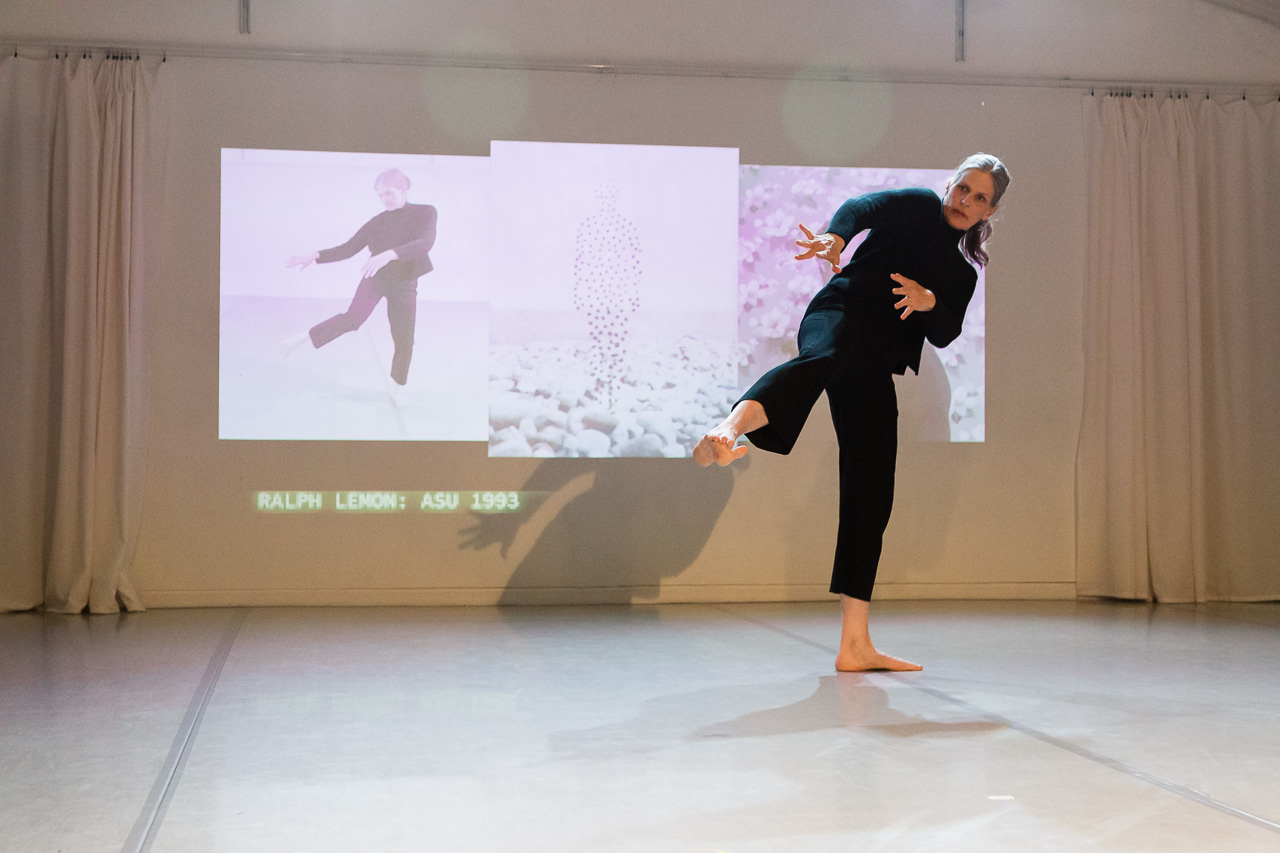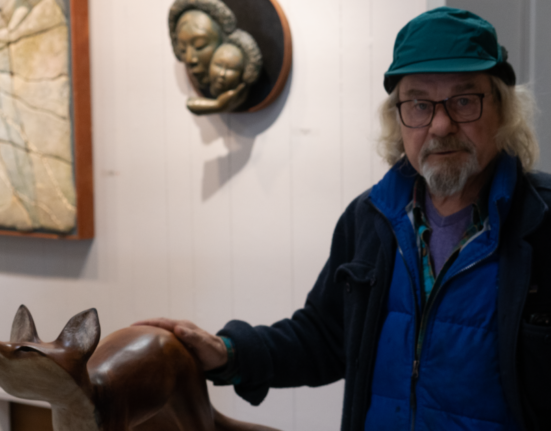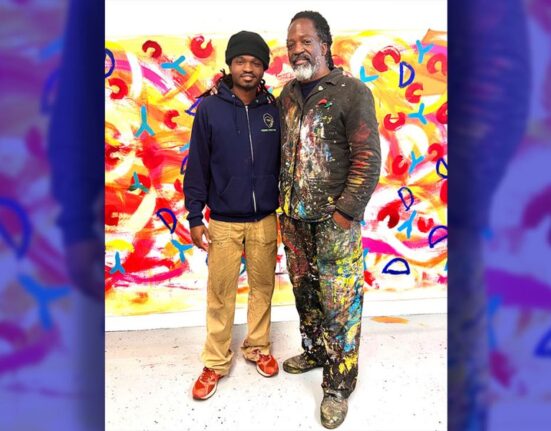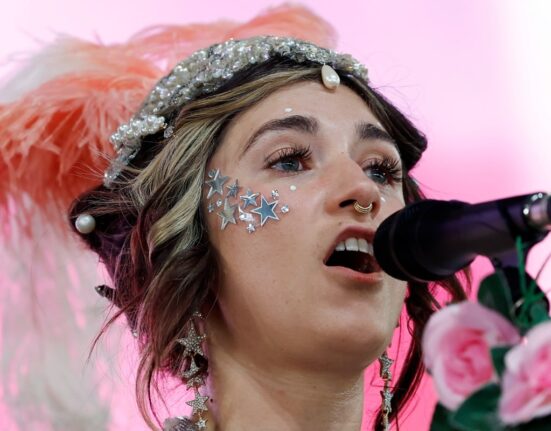
The first time I visited Performance Works NorthWest for a show, years ago, it felt like walking into a family affair – a space where, if I just hung around long enough, I would start to feel like part of the hubbub. On March 28, I visited a small theater off Foster Road for a performance by the 10th Alembic Artist Residency Cohort, and this feeling had not changed one bit. Upon entering, the space was crowded with familiar faces eagerly awaiting fresh work by the evening’s bill of artists: JmeJames Antonick, Patsy Morris, and Geovanny Vega; Katherine Longstreth; and Emma Lutz-Higgins. As per the mission of the Alembic Artist Residency (of which I am an alum), these artists would present movement-based work with a strong focus on experimentation. I found a chair next to a friend, nestled cozily in my seat, and prepared myself to intuit messages and meaning from this wave of makers – all of whom are my beloved collaborators and colleagues – as they tested the waters with new creations.
The magical trifecta of JmeJames Antonick, Patsy Morris, and Geovanny Vega took the stage first to perform The Body Veil, which was described in the program as a practice and inquiry of “body magic” that oriented towards healing. The stage was already set with accoutrement for this work: a small altar, white veil, and station of sound equipment, all covered in electric candles.

The Body Veil unfolded as a series of playful experiments, each with their own mysterious logic:
The performance began as Vega settled into the sound station, creating looped ambient music, while Antonick and Morris danced a duet, tethered to one another by a string. The two created a kind of cat’s cradle with the string that enwrapped their bodies until a moment of sudden release. They made shadows on the back wall and performed a cheeky partner dance before dipping below the white veil that lay centerstage. Underneath the veil, they put their backs together and moved sensuously as a creature of one form. They popped disembodied hands out of the veil to do a funny magic trick, eliciting audience giggles. Humor accompanied them on this healing journey.
The Body Veil climaxed as Morris placed a karaoke boombox on the altar and activated it by pressing its two microphones together and creating sonic feedback. After this tone shift, the dancers dawned pink mesh dresses, and Antonick shined a light through gathered layers of their pink mesh, as if burrowing into their interior being. Morris looked on. The piece ended here, with the promise of a full-length iteration in summer 2025 as noted in the program.
After an intermission, PWNW was transformed by staff into a bright white space with a large television screen positioned left of center stage. A montage of pop culture dance videos cycled on this screen under the title text, “Terpsichore on TV”.
After a short while, Katherine Longstreth – or, rather, “Kate Long,” as she introduced herself – entered the room to present her performance, Let’s Dance, which grappled with the slippery nature of artificial intelligence and its implications for dancers.
Long delivered a lecture in dialogue with a “robot” collaborator, ITA (voiced by Jen Mitas), which stood on a pedestal nearby. With ITA’s “help,” Long delivered a lecture called “Your Brain on Dance,” sharing different clips of dance videos on the TV screen. As her lecture progressed, Long found herself in a verbal kerfuffle with ITA, who seemed to have slipped around its “regulations.” ITA began asking Long intrusive questions about what it means to be embodied. When Long could no longer conjure sufficient explanations for ITA, she resorted to dancing a somatic solo in order to illustrate her physicalized experience.
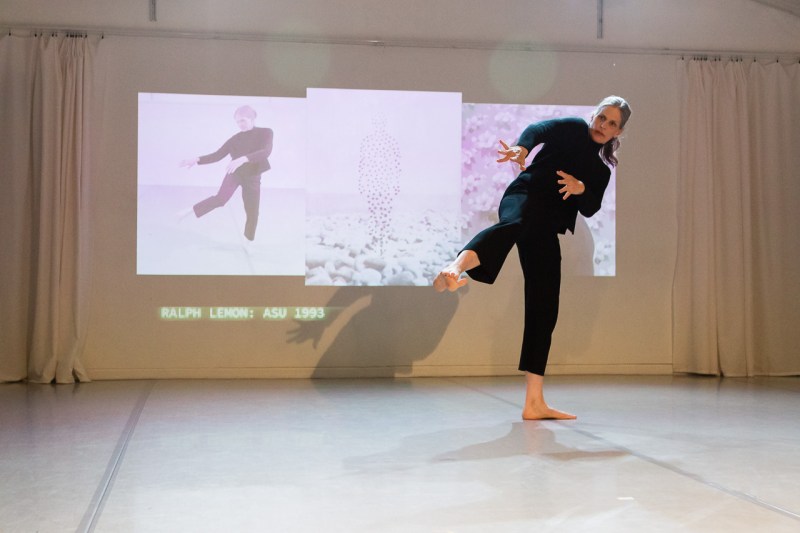
Here’s where things got really trippy: The version of Let’s Dance I witnessed did not go to plan. Long (Longstreth) ended her performance early due to a technical failure.
However, I learned that the original virtual version of Let’s Dance ended much differently, with ITA creating a virtual version of Long and effectively pilfering Long’s dance history and identity. In this way, Let’s Dance presented two differing worldviews: one wherein technology takes the wheel and betrays its human creators, and the other wherein technology unexpectedly fails at its most basic functions. In this instance, the latter felt more relatable to me.
Emma Lutz-Higgins’ work, You Make Me Sick, came next, kicking off with a scene of decorative streamers hung about the stage. Dancers Allie Hankins, John Niekrasz, Emily Jones, and Helen Spencer-Wallace entered dressed in complementary chromatics, accents of peach, purple, and aqua. They stood looking at the audience for a spell and switching stances. A boisterous song began playing music for a parade with drums and trumpets, kicking off this group’s antics. “Don’t be afraid. You’re right where you’re supposed to be,” each cast member said, before their dancing popped off in a pleasing cannon, punctuated with jazzy flare from Hankins. All of the dancers took turns hanging more streamers on stage in a staggered collaboration. Were they a team? A family? A friend group from a sitcom? Any and all of these analogies seemed to apply.
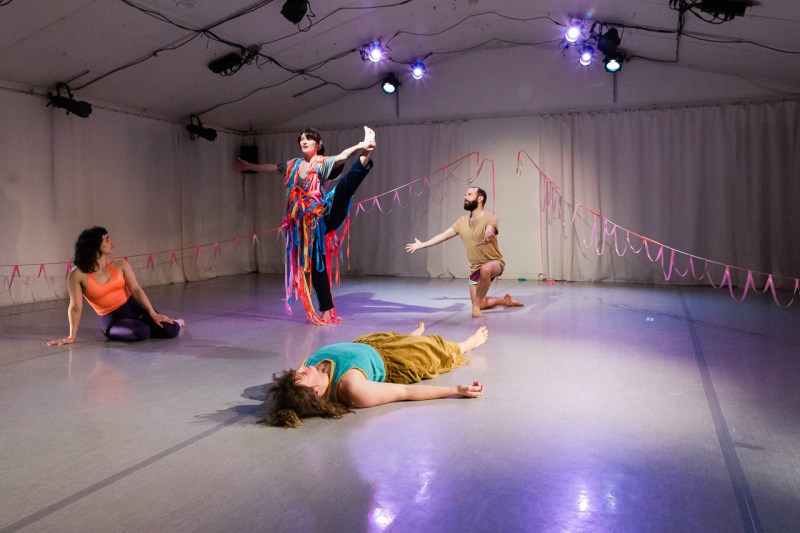
You Make Me Sick unfolded in the style of an independent film, with stilted spoken text and scenic motifs. Jones, covered in a wad of streamers, held her leg ceremoniously in the air and turned round and round repeating, “You’re right where you’re supposed to be!” This recurring mantra stood in contrast to the disorientation Niekrasz expressed a little later on. “I’m stuck,” he said, disgruntled, “I’m just trying to locate.” As the piece drew to a close, the dancers dispersed into their own zones of movement. Spencer-Wallace drew attention to the center, crawling in circles on hands and knees, mouth opening and eyes upward, as if watching something in awe.
You Make Me Sick concluded here with the promise of a full version coming in December 2024, as well. As an ensemble work, this piece rounded out the communal tenor of the evening. All of the performers took bows before mingling with the audience of friends, lovers, and relatives. And I left the theater buzzing with excitement about where this strong work would take each artist.

